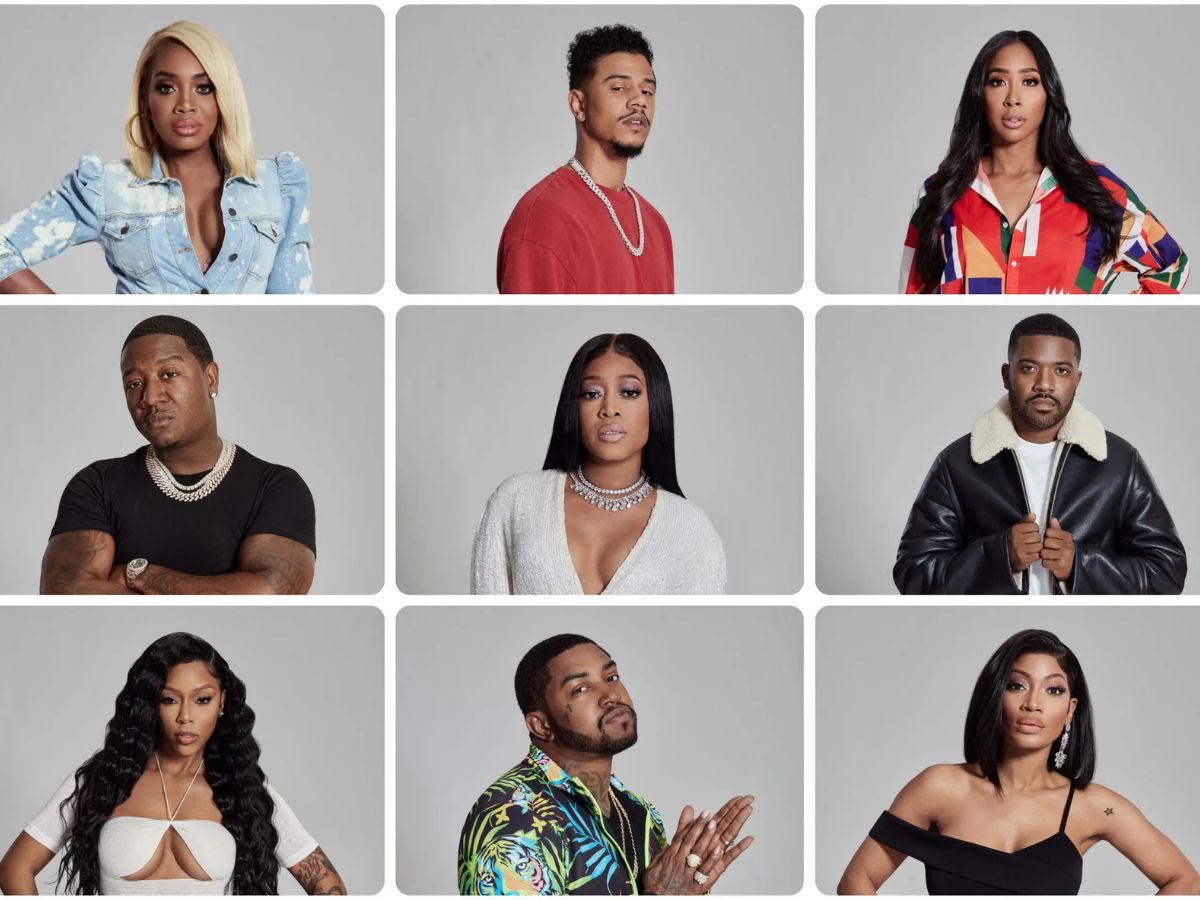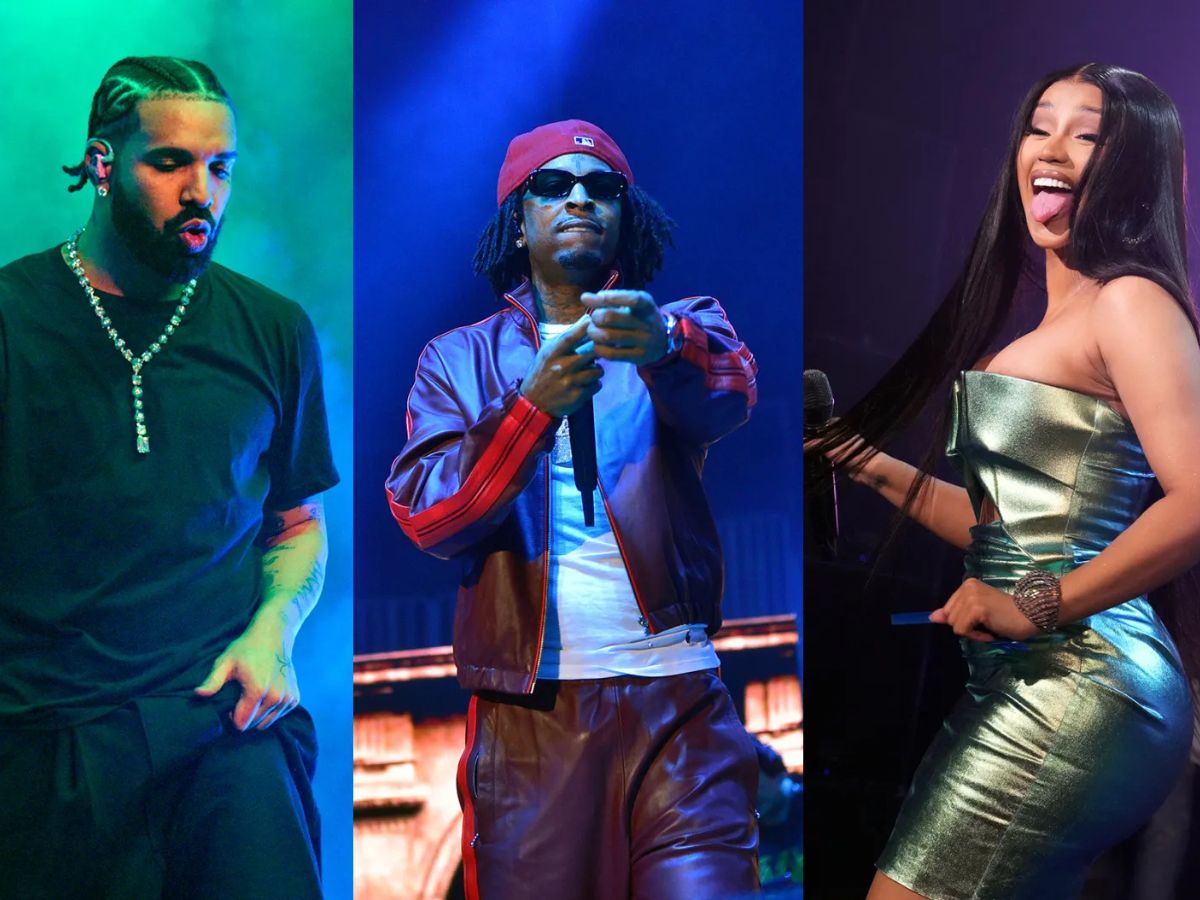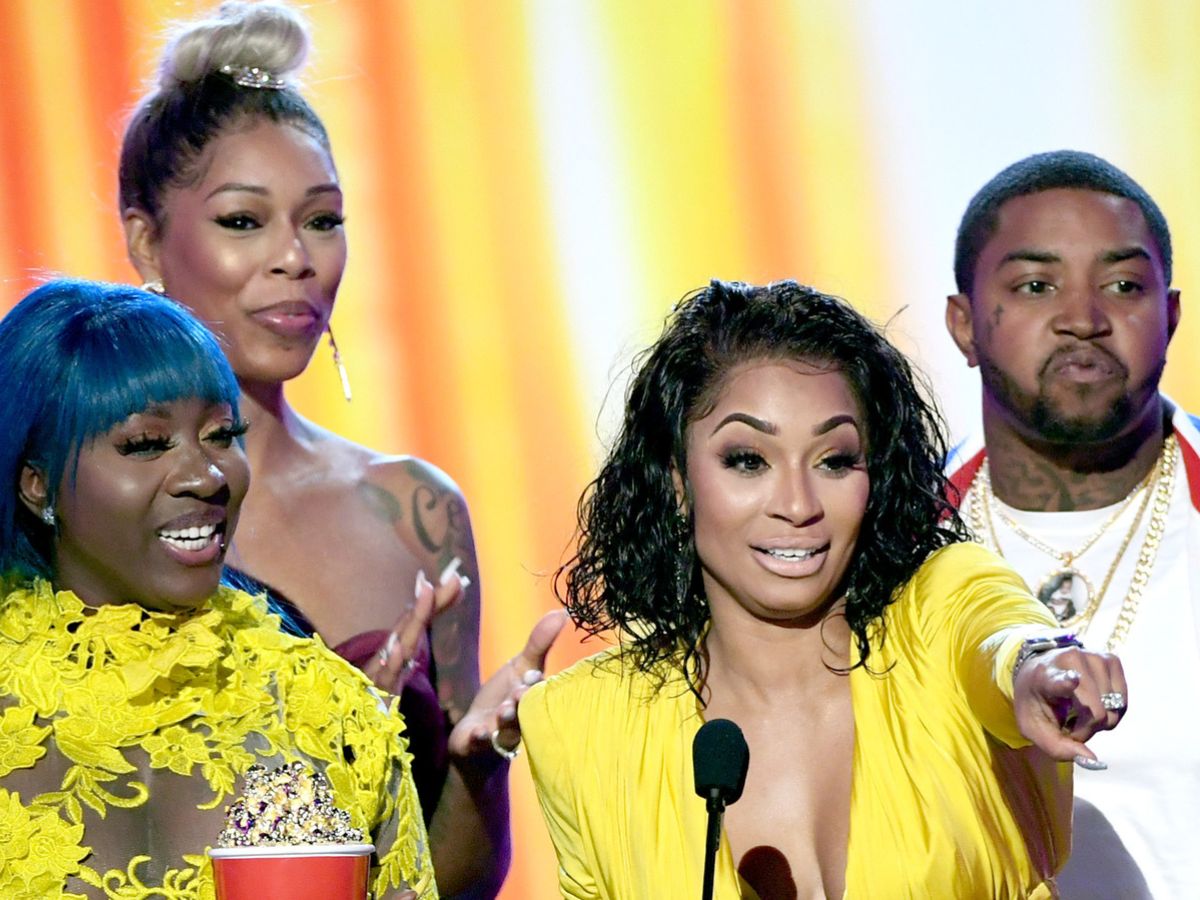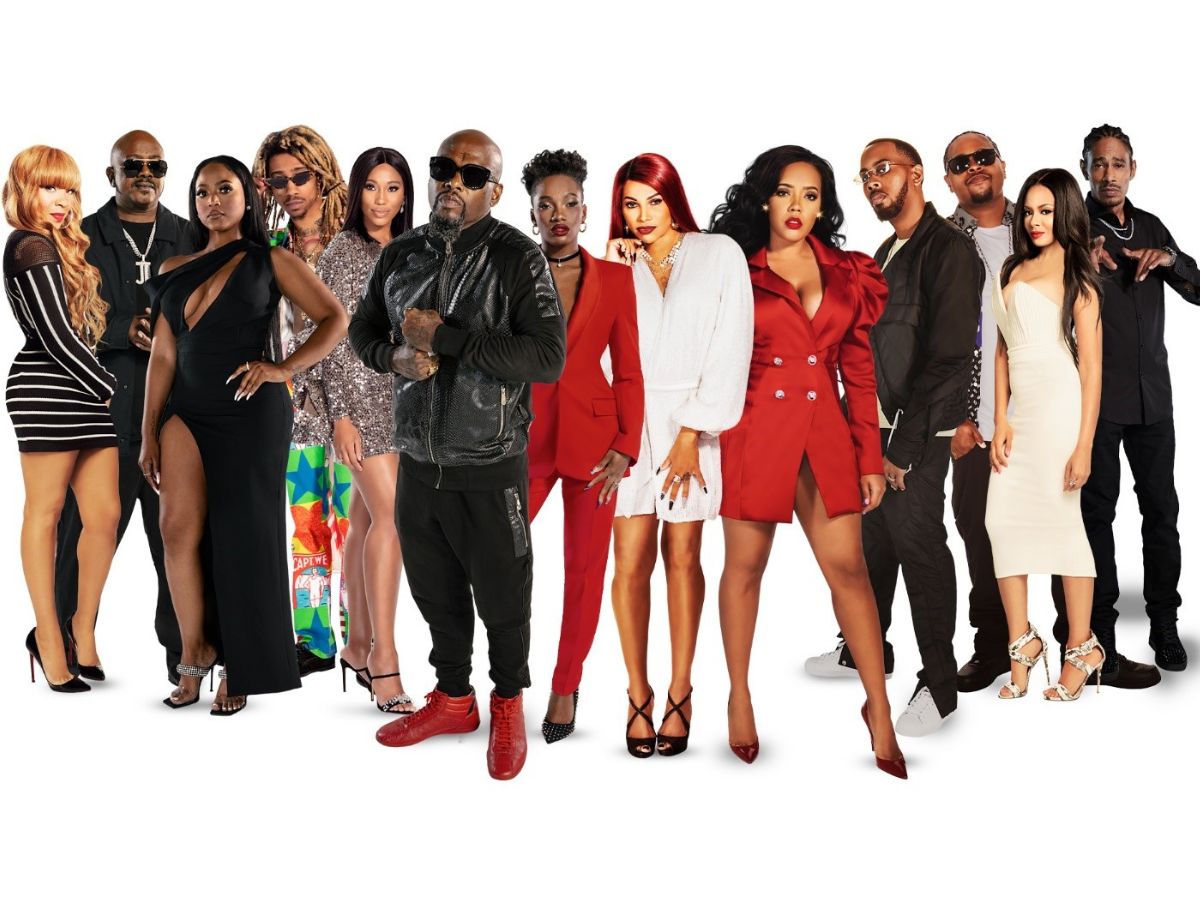

Hip Hop
When Was Hip Hop Started
Modified: January 22, 2024
Discover the origins of hip hop and its significant impact on music and culture. Explore when hip hop started and its evolution into a global phenomenon.
(Many of the links in this article redirect to a specific reviewed product. Your purchase of these products through affiliate links helps to generate commission for AudioLover.com, at no extra cost. Learn more)
Table of Contents
Introduction
Hip Hop, a cultural movement that emerged in the 1970s, has greatly influenced music, fashion, art, and society as a whole. It originated in the African American and Latinx communities in the Bronx, New York City, and has since become a global phenomenon, shaping the music industry and leaving a lasting impact on popular culture.
From its humble beginnings at neighborhood block parties to its widespread popularity today, hip hop has paved the way for countless artists, provided a platform for self-expression, and challenged societal norms.
With its pulsating beats, rhythmic poetry, and distinctive dance moves, hip hop has transcended barriers and connected people from diverse backgrounds. It has given a voice to the marginalized, tackled social issues, and provided an outlet for artistic expression.
In this article, we will delve into the origins of hip hop, explore the early pioneers who laid the foundation for the movement, examine its journey to the mainstream, and discuss its enduring influence.
Join us as we embark on a journey through the rich history and evolution of hip hop, uncovering its cultural significance and the profound impact it continues to have on music and society.
Origins of Hip Hop
Hip hop’s roots can be traced back to the vibrant streets of the Bronx in the 1970s, a time of economic decline and social unrest. It was within this cultural melting pot that a new form of artistic expression began to emerge.
The influences of African American and Latinx communities played a significant role in shaping hip hop’s sound and style. DJs would set up turntables in local parks, playing funk, soul, and disco records, while MCs would energize the crowd with their rhymes and witty wordplay.
During this period, the art of “sampling” came to the fore, with DJs looping and remixing breaks from popular songs, creating unique and infectious beats. This practice laid the foundation for the production techniques that would later define hip hop music.
Aside from the music, other elements of hip hop culture began to take shape. Graffiti artists used the city as their canvas, adorning buildings and subway cars with vibrant murals and intricate designs. B-boys and B-girls showcased their acrobatic dance moves, battling each other in friendly competition.
What set hip hop apart from other genres at the time was its raw and authentic nature. It provided a voice for the marginalized and shed light on the struggles and realities of life in urban communities.
The social and political climate of the 1970s also played a significant role in the emergence of hip hop. The civil rights movement, the Vietnam War, and the economic hardships faced by many communities fueled a sense of activism among the youth. Hip hop became a way to express frustration, speak out against injustice, and rally for change.
As hip hop continued to gain traction within these communities, it began to spread beyond the boundaries of the Bronx. The movement soon reached other boroughs of New York City, as well as other cities across the United States. It was a cultural force that was impossible to ignore.
With its roots firmly planted in the streets of the Bronx, hip hop was on the cusp of a transformative journey that would propel it into the mainstream and solidify its position as a dominant force in global music and culture.
Influences on Hip Hop
Hip hop is a genre that is deeply influenced by a wide range of musical styles, cultural movements, and societal factors. Understanding these influences helps us grasp the complexity and richness of hip hop as a cultural phenomenon.
One of the key influences on hip hop is the African oral tradition. Griots, West African storytellers and musicians, passed down history and culture through spoken word and rhythmic poetry. This tradition resonated with hip hop artists, who embraced the art of lyrical storytelling as a means of conveying their own experiences and narratives.
Another significant influence on hip hop is the rhythmic and percussive nature of African and Afro-Caribbean music. The syncopated beats and polyrhythms found in genres like Afrobeat, reggae, and dancehall heavily influenced the production and sound of early hip hop. These infectious rhythms provided the foundation for the genre’s iconic beats and laid the groundwork for the evolution of hip hop music.
Other forms of African American music, such as jazz, funk, and soul, also played a critical role in shaping hip hop’s sound. The grooves, melodies, and instrumentation of these genres are frequently sampled in hip hop songs, providing a nostalgic and familiar backdrop for artists to express themselves.
The sociopolitical climate of the 1970s and 1980s also left a lasting imprint on hip hop. The Civil Rights Movement, Black Power Movement, and the fight against systemic oppression deeply influenced the lyrical content of hip hop songs. Artists used their platforms to address issues of racism, poverty, police brutality, and social inequality, bringing important social issues to the forefront of popular music.
Furthermore, the rise of disco and the emergence of electronic music in the 1970s had a significant impact on hip hop’s sonic landscape. DJs began incorporating disco and electronic elements into their sets, using drum machines and synthesizers to create innovative sounds. This experimentation paved the way for the development of new subgenres within hip hop, such as electro and techno rap.
The visual arts, particularly graffiti, have also heavily influenced hip hop. Graffiti served as a form of self-expression and a way for artists to leave their mark in a public space. The vibrant colors, intricate designs, and bold lettering found in graffiti art have become synonymous with hip hop culture, adorning album covers, fashion, and urban landscapes.
Overall, hip hop is a genre that draws inspiration from a diverse range of influences, blending them together to create something entirely unique. Its ability to embrace and adapt to different styles and voices is what has allowed it to transcend borders and become a global phenomenon.
The Birth of Hip Hop Culture
Hip hop culture, with its distinct elements of music, dance, art, and fashion, was born out of the vibrant streets of the Bronx, New York City, in the 1970s. It was a time of economic decline, social unrest, and cultural renaissance, which provided the fertile ground for this cultural movement to take shape.
At the heart of hip hop was the neighborhood block party. DJs, armed with turntables and speakers, set up in local parks and playgrounds, spinning records and creating an atmosphere of celebration and unity. They played a mix of funk, soul, and disco, using their skills to blend different tracks and create innovative mixes.
Accompanying the DJs were the MCs, or “masters of ceremonies,” who were responsible for hyping up the crowd and delivering rhythmic rhymes. The MCs were the storytellers, using their words to entertain and engage the audience, often engaging in friendly battles to showcase their lyrical prowess.
As the music played, another form of artistic expression emerged: breakdancing. B-boys and B-girls took to the pavement, showcasing their acrobatic dance moves and battling each other in displays of skill and creativity. Breakdancing, or B-boying, became an essential element of hip hop culture, emphasizing the importance of physicality and self-expression.
Graffiti art also played a crucial role in the birth of hip hop culture. Artists used the city walls and subway trains as their canvas, creating vibrant and elaborate graffiti pieces. This form of visual expression was a way to leave a mark in the public space and showcase artistic talent to the world.
Furthermore, fashion became an integral part of hip hop culture. Influenced by the style of the streets, artists embraced loose-fitting clothes, tracksuits, sneakers, and large accessories such as gold chains and oversized jewelry. These fashion choices became synonymous with hip hop and continue to shape its aesthetic today.
What set hip hop culture apart was its spirit of innovation, creativity, and DIY (do-it-yourself) mentality. With limited resources, artists found ways to make music, create art, and express themselves without relying on traditional institutions. This sense of independence and entrepreneurial spirit became a defining characteristic of hip hop culture.
Word of the emerging hip hop culture soon spread beyond the Bronx. It gained traction in other boroughs of New York City and eventually began to resonate with communities across the United States. The cultural movement had tapped into something universal – the desire for self-expression and the power of music and dance to bring people together.
As hip hop culture continued to grow and evolve, it would transform not only the music industry but also the wider cultural landscape. It became a force for change, empowerment, and social commentary, giving a voice to those who had previously been unheard. Hip hop had arrived, and its impact would be felt worldwide.
Early Pioneers of Hip Hop
As hip hop culture began to take shape in the streets of the Bronx, a group of talented and innovative individuals emerged as the early pioneers of the movement. These individuals played a pivotal role in shaping the sound, style, and spirit of hip hop, laying the foundation for future generations of artists.
1. DJ Kool Herc: Known as the “Father of Hip Hop,” DJ Kool Herc is credited with pioneering the art of DJing and is recognized for his influential parties in the Bronx during the 1970s. He developed the technique of “breakbeats,” isolating and looping the instrumental sections of songs to create extended dance breaks – a fundamental element of hip hop music.
2. Afrika Bambaataa: As a DJ and cultural activist, Afrika Bambaataa played a crucial role in organizing the elements of hip hop into a unified movement. He formed the influential group Zulu Nation, which promoted peace, unity, and knowledge through hip hop music and culture. Bambaataa’s eclectic musical taste and use of diverse genres in his DJ sets expanded the sonic palette of hip hop.
3. Grandmaster Flash: Grandmaster Flash revolutionized DJing with his innovative techniques and contributions to turntablism. He pioneered the art of “cutting” and “scratching,” manipulating vinyl records to create rhythmic patterns and unique sounds. Flash also introduced the concept of the “mixtape,” showcasing his skills and blending different genres to create seamless and dynamic mixes.
4. The Sugarhill Gang: Consisting of Wonder Mike, Big Bank Hank, and Master Gee, The Sugarhill Gang made history in 1979 with their hit single “Rapper’s Delight,” which became the first commercially successful hip hop song. Their success helped to introduce hip hop to a wider audience and paved the way for future rap artists to thrive in the mainstream music industry.
5. Fab Five Freddy: Fab Five Freddy is a multitalented artist who made significant contributions to hip hop culture. He was one of the early graffiti artists and appeared in the groundbreaking hip hop film “Wild Style.” Freddy also hosted the influential hip hop TV show “Yo! MTV Raps,” bringing hip hop music and culture into the living rooms of millions of viewers.
These early pioneers of hip hop not only pushed the boundaries of music and art but also laid the groundwork for the cultural and social impact that hip hop would have in the years to come. Their creativity, innovation, and dedication to their craft opened doors for countless aspiring artists and established hip hop as a dominant global force.
Hip Hop’s Journey to the Mainstream
Following its origins in the Bronx, hip hop slowly made its way from the underground to the mainstream, transforming the music industry and becoming a global cultural phenomenon. Its journey to the mainstream was marked by both triumphs and challenges, as hip hop fought for recognition and acceptance in a music industry that initially dismissed it.
In the early 1980s, hip hop gained popularity beyond its New York City roots, spreading to other urban areas in the United States. As artists from different regions began to emerge, the diversity within hip hop became more evident, offering a broad range of styles and perspectives. From the West Coast gangsta rap of N.W.A. to the conscious lyricism of East Coast artists like Public Enemy, hip hop began to establish its unique identity.
One of the watershed moments in hip hop’s journey to the mainstream came in 1986 with the release of Run-D.M.C.’s album “Raising Hell.” Their fusion of rock and rap on the hit song “Walk This Way” brought hip hop to a wider audience and broke down existing musical barriers. The collaboration with rock legends Aerosmith not only propelled Run-D.M.C. to superstardom but also opened doors for future genre-blending collaborations.
In the late 1980s and early 1990s, hip hop experienced a golden era of creativity and commercial success. Artists such as LL Cool J, Rakim, and Notorious B.I.G. emerged as icons of the genre, showcasing their lyrical prowess and storytelling abilities. This era also saw the rise of influential record labels like Def Jam and Death Row Records, which provided a platform for talented artists to showcase their skills.
With the growing popularity of hip hop, record executives began to pay attention, leading to major record deals for hip hop artists and increased marketing efforts. MTV’s “Yo! MTV Raps,” which premiered in 1988, played a pivotal role in bringing hip hop videos into the mainstream, exposing artists to a wider audience and solidifying the genre’s place in popular culture.
However, along with its commercial success, hip hop also faced criticism and controversy. The explicit and sometimes violent nature of certain lyrics resulted in debates about censorship and the influence of hip hop on society. Despite these challenges, hip hop pushed forward, gaining global recognition with the emergence of international artists like Tupac Shakur and Notorious B.I.G.
In the late 1990s and early 2000s, hip hop continued to dominate the music charts and infiltrate popular culture. Artists such as Jay-Z, Eminem, and Kanye West achieved unprecedented success, solidifying hip hop’s place in the mainstream. Hip hop also expanded its reach beyond music, influencing fashion, film, and even politics.
Today, hip hop remains a driving force in the music industry, with artists from diverse backgrounds continuing to push boundaries and evolve the genre. Its journey from the streets of the Bronx to the global stage is a testament to the power of music, cultural expression, and the resilience of a movement that started as an underground phenomenon and transformed into a mainstream powerhouse.
Hip Hop’s Impact on Society
Hip hop is more than just a genre of music—it is a powerful cultural movement that has had a profound impact on society. From its humble beginnings in the Bronx to its global reach today, hip hop has influenced countless individuals, reshaped popular culture, and addressed important social issues.
One of the most significant ways hip hop has impacted society is by giving a voice to marginalized communities. It provided a platform for artists to express their experiences, frustrations, and aspirations, often shedding light on the social and economic challenges faced by urban communities. Hip hop became a vehicle for self-expression and a means to address systemic inequalities and injustices.
Furthermore, hip hop challenged societal norms and stereotypes, breaking down racial and cultural barriers. As a genre rooted in African American and Latinx culture, it provided a space for artists to celebrate their heritage, express their creativity, and educate others about their rich cultural traditions. Through music, dance, fashion, and art, hip hop helped to foster multicultural understanding and appreciation.
Hip hop’s influence extended beyond the creative sphere and affected other areas of society. It redefined fashion, with artists like Run-D.M.C. popularizing the “streetwear” aesthetic and brands like FUBU empowering young entrepreneurs in the fashion industry. Hip hop also played a pivotal role in the rise of sneaker culture, with limited-edition collaborations becoming highly sought after by enthusiasts worldwide.
Moreover, hip hop had a significant impact on language and the way people communicate. Its use of slang, wordplay, and inventive lyricism influenced popular vocabulary and introduced new expressions into everyday speech. Phrases like “dope,” “fly,” and “bling” entered the mainstream lexicon, reflecting hip hop’s influence on contemporary language.
Through its lyrics and music videos, hip hop has addressed social and political issues that are often overlooked by mainstream media. Artists such as Public Enemy and Kendrick Lamar have tackled topics like police brutality, racial inequality, and the war on drugs, encouraging critical conversations and raising awareness about these pressing issues. Their songs have become anthems for social change and have inspired activism both within and outside the hip hop community.
In addition, hip hop has served as a positive outlet for youth expression, providing an alternative to negative influences and activities. It has empowered individuals to share their stories, express their creativity, and pursue their passions. Hip hop has given hope and inspiration to many, fostering a sense of resilience and determination in the face of adversity.
Overall, hip hop’s impact on society is vast and multifaceted. It has broken down barriers, amplified marginalized voices, and challenged the status quo. As a cultural and artistic movement, hip hop continues to evolve and shape the world around us, demonstrating the power of music and self-expression to effect positive change.
Evolution of Hip Hop
Hip hop has evolved and transformed throughout the years, adapting to new styles, technologies, and cultural influences. Its evolution has been marked by the emergence of new subgenres, the fusion of different musical elements, and the constant innovation of artists pushing the boundaries of the genre.
In its early days, hip hop was characterized by its raw and minimalist sound. DJs would loop and mix breaks from funk, soul, and disco records, providing the foundation for MCs to deliver their rhymes. However, as hip hop gained popularity and entered the mainstream, it began to incorporate elements of other musical genres.
In the 1980s, artists started experimenting with the use of synthesizers and drum machines, leading to the rise of electro and techno rap. Artists like Afrika Bambaataa and The Beastie Boys fused hip hop with electronic music, injecting a futuristic and dance-oriented sound into the genre.
The 1990s saw the emergence of different subgenres within hip hop. West Coast gangsta rap, pioneered by artists like N.W.A. and Dr. Dre, portrayed stories of street life and gang culture, capturing the realities of urban communities. On the East Coast, artists like Nas and The Notorious B.I.G. embraced a more lyrically focused and introspective style of rap, known as “boom bap,” highlighting intricate wordplay and storytelling.
As the 2000s rolled in, hip hop continued to evolve with the rise of Southern rap, characterized by artists like OutKast, Lil Wayne, and T.I. They brought a distinctive sound that blended hip hop with elements of R&B, soul, and funk, while infusing it with their regional flavor.
The 2010s witnessed the widespread popularity of trap music, which originated in the Southern United States. Artists such as Gucci Mane, Future, and Migos took trap to new heights, with its heavy basslines, catchy hooks, and trap-style drum patterns dominating the airwaves. The influence of trap extended beyond hip hop and infiltrated other genres like pop and EDM.
Furthermore, the internet and digital platforms have played a significant role in the evolution of hip hop. Artists can now create and release music independently, bypassing traditional gatekeepers. This has led to a more diverse and inclusive hip hop landscape, with artists from different backgrounds and regions gaining recognition and success.
Today, hip hop continues to evolve and defy categorization, with artists experimenting and pushing the boundaries of the genre. Some blend hip hop with elements of rock, jazz, or soul, while others incorporate elements of Afrobeat, dancehall, or reggae. This constant evolution ensures that hip hop remains a relevant and dynamic force in music and culture.
As hip hop continues to evolve, its impact on society and popular culture remains undeniable. It has become a global phenomenon, transcending borders and language barriers. Hip hop’s ability to adapt, innovate, and reflect the diverse experiences of its artists and listeners is what continues to make it a vibrant and influential genre.
Conclusion
Hip hop, a cultural movement that originated in the Bronx in the 1970s, has grown into a global phenomenon that has reshaped music, fashion, art, and society as a whole. From its humble beginnings as neighborhood block parties, hip hop has evolved and transformed, continuously adapting to new styles and cultural influences.
The origins of hip hop in African American and Latinx communities, along with its deep connections to African oral traditions and percussive music, laid the foundation for its unique sound and style. The early pioneers of hip hop, including DJs like Kool Herc and Grandmaster Flash, MCs like Afrika Bambaataa, and artists like The Sugarhill Gang, set the stage for the genre’s rapid growth.
Hip hop’s journey to the mainstream was marked by both triumphs and challenges. It broke down barriers and challenged societal norms, introducing new styles, fashion trends, and even language into the mainstream. Hip hop’s impact on society can be seen in its ability to give a voice to marginalized communities, address social issues, and foster multicultural understanding.
Throughout its evolution, hip hop has embraced different subgenres, incorporating elements of electronic music, R&B, trap, and more. The genre’s constant innovation and experimentation have allowed it to remain relevant and influential over the years.
In conclusion, hip hop’s impact cannot be underestimated. It has transcended borders, bridged cultural gaps, and inspired generations of artists and listeners worldwide. Hip hop’s authenticity, rawness, and ability to capture the spirit of its communities have made it a powerful force for self-expression, empowerment, and social change.
As we look to the future, hip hop will undoubtedly continue to evolve, reflecting the experiences and aspirations of new generations. Its ability to adapt and resonate with people from all walks of life is a testament to its staying power as a cultural force.











